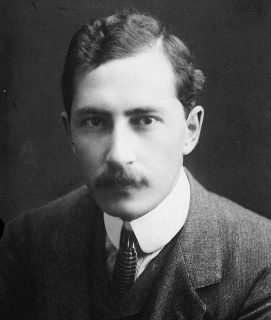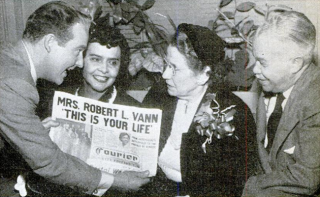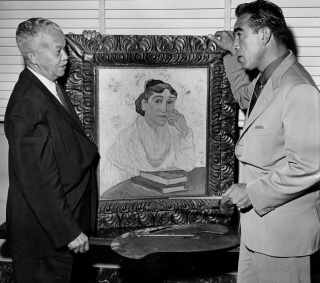Education | Timeline |
- 1829
- 1834
- 1840s
- 1848
- 1853
- 1859
- 1870
- 1870s
- 1871
- 1875
- 1877
- 1879
- 1880s
- 1882
- 1883
- 1884
- 1886
- 1887
- 1889
- 1890s
- 1891
- 1892
- 1893
- 1894
- 1895
- 1898
- 1899
- 1900
- 1900s
- 1901
- 1902
- 1904
- 1905
- 1906
- 1908
- 1909
- 1910
- 1910s
- 1911
- 1912
- 1913
- 1914
- 1915
- 1916
- 1917
- 1918
- 1919
- 1920
- 1920s
- 1921
- 1922
- 1923
- 1924
- 1925
- 1926
- 1927
- 1928
- 1929
- 1930s
- 1930
- 1931
- 1933
- 1934
- 1935
- 1936
- 1937
- 1938
- 1939
- 1940s
- 1940
- 1941
- 1942
- 1943
- 1944
- 1945
- 1946
- 1947
- 1948
- 1949
- 1950s
- 1950
- 1951
- 1952
- 1953
- 1954
- 1955
- 1956
- 1957
- 1958
- 1959
- 1960s
- 1960
- 1961
- 1962
- 1963
- 1964
- 1965
- 1966
- 1967
- 1968
- 1969
- 1970s
- 1970
- 1971
- 1972
- 1973
- 1974
- 1976
- 1979
- 1980
- 1992
Awarded Spingarn Medal
The NAACP (National Association for the Advancement of Colored People) annually awards the gold Spingarn Medal to the African American who performs at the highest and noblest level the previous year or years. Named in the memory of NAACP Chairman J.E. Spingarn (image), this award calls attention to outstanding, high-achieving African Americans and rewards their achievements.
In 1953 Paul R. Williams is selected as the 38th recipient of the Spingarn Medal. The official citation reads: "Endowed with creative talent and possessed of a will to achieve success in our competitive system, Paul R. Williams overcame early handicaps of poverty and racial discrimination to win national honor as one of America's outstanding architects."
Accepting the medal, Williams urges African Americans to become active, progressive citizens by becoming homeowners. In his speech, the architect articulates his personal philosophy of achievement. Through home-ownership, African Americans improve their "standard of citizenship" and become active participants in American progress and "not apart from it."
Mr. and Mrs. Paul R. Williams Assist Ralph Edwards on "This Is Your Life"
"This Is Your Life" is an early version of today's reality television. Emcee Ralph Edwards greets an unsuspecting celebrity or outstanding citizen at the NBC Television Studios, retelling the story of their life to a curious American audience in under 30 minutes. The program is famous for emotion and tears as it depicts the "famous" as real people.
In 1953 Edwards surprises Mrs. Jesse L. Vann, newspaper publisher, with the story of her life. Mrs. Vann is one of the few African Americans featured on this TV show. Her friends Della and Paul Williams provide the pretext to bring her to the studio for the tribute.
Paul Williams Named L.A. City Commissioner
Jet, September 10, 1953
"The 1953 winner of the NAACP's coveted Spingarn Metal was assigned to the Municipal Art Commission ... for a three-year term."
Williams serves on the Commission from 1953 to 1965. He is seen in this Herald Examiner photograph from the Los Angeles Public Library with the actor Anthony Quinn. They are attending the van Gogh exhibit at the Los Angeles Municipal Art Gallery in Barnsdall Park, where they pose with one of that painter’s works.
President Picks L.A. Architect
Los Angeles Times, September 13, 1953
"Paul R. Williams, 55, appointed to the new Housing Advisory Commission by President Eisenhower, is a Los Angeles architect who has won international recognition for his work ... Williams, who lives at 1690 Victoria Ave., last June received the Spingarn Medal, awarded annually to an American Negro for distinguished achievement by the National Association for the Advancement of Colored People."
Forum Discusses Industry and Art
New York Times, October 20, 1953
Speakers for Herald Tribune Debate Effects of Machine Age on Cultural Values
"Speakers at yesterday's session, the second this year, included Henry Dreyfuss, industrial designer; Paul R. Williams, architect; Arthur A. Houghton Jr., president of Steuben Glass, Inc.; Charles E. Odegaard, dean of the College of Literature, Science and Arts at the University of Michigan; and Francis Henry Taylor, director of the Metropolitan Museum of Art."









Our New Domestic Architecture
On October 19, 1953 Williams is a presenter at the influential New York Herald Tribune Annual Forum. He addresses "what the architect is doing to make the home a better and more comfortable place for man's head and heart." Williams believes that the public's desire for "extreme and exotic design" is changing, replaced by a "sane American Modern."
As an architect who designs both large and small houses, Williams describes new building methods that reduce construction time including "factory-assembled kitchens and storage walls ... We are arriving at 'less house and more convenience.'"
Williams sees the spread of California's casual lifestyle to all Americans, predicting the California ranch house — one-story, spread-out plan with more glass and sunlight — will replace the "dark and gloomy" houses of the past.
"All of our habits are undergoing some kind of change: for instance, you seldom see a dinner for ten or twelve set up around the dining-room table, but you see a buffet style of gathering where the food is left in large pots with the announcement to 'come and get it.'"
In summary he says: "The basic concept is to make the home friendly and easy to live in ... It will not be the International Style. It will be a true expression of our standard of living. It will be the American style."
From New Patterns for Mid-Century Living: Report of the 22nd Annual Forum of the New York Herald Tribune, 1953.